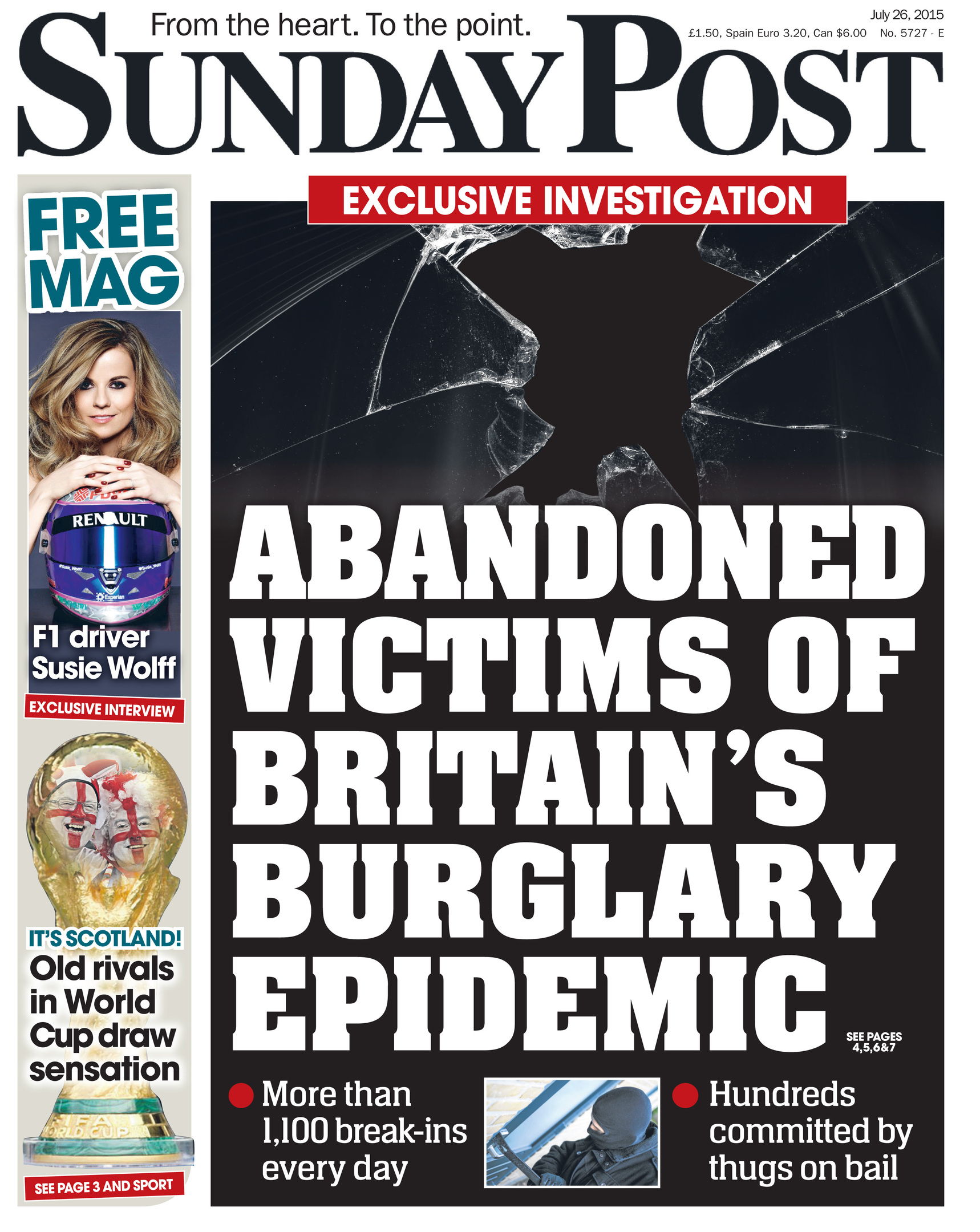
EVEN burglars believe judges are being too lenient on housebreakers, according to a survey.
A poll of Britain’s prison population revealed that three out of four inmates think burglars should be handed longer sentences if children or elderly people lived in the homes targeted.
In the same poll, 60% of convicted housebreakers admitted they hadn’t considered the impact their crimes had on youngsters.
The findings were published after a Sunday Post investigation revealed only a quarter housebreaking cases reported to the police over the past decade ended in someone being charged.

Our Safe In Our Houses campaign laid bare the devastating impact a break-in could have on the lives of hard-working families, the elderly and vulnerable.
The latest survey, commissioned by security firm ADT, further highlights more needs to be done to tackle the housebreaking scourge blighting our communities.
A spokesman for ADT said: “It shows most people who burgle have no idea how much emotional trauma it can cause.
“Most burglars appeared to be concerned to know how much hurt they might have caused.
“It shows we can help re-offending by leading burglars to see the real effects of targeting the family home.”
The survey found 90% of those who replied admitted they would feel guilty if they knew children had been left traumatised. However, two-fifths claimed they were “surprised” youngsters suffered long-term affects.
Former inmate Noel Smith, 55, said: “When you’re a criminal, you don’t think of your victims.
“To you, they’re not people because if you personalise them it will stop you committing the crime.
“To stop re-offending, we need to work on instilling victim empathy and show burglars the impact of their crimes.”
Across Scotland, figures show there is a break-in every 26 minutes on average but there are variances in the ability of the police to catch the crooks responsible.
Last year The Sunday Post revealed the first ever breakdown of burglaries and clear-up rates by council ward.
In Aberdeen’s Garthdee suburb, just one of the 56 housebreakings recorded was solved, meaning the detection rate stood at a paltry 1.8%.
In Falkirk North, the area with the highest detection rate of those we probed, 62 of 107 break-ins were cleared up. But even there, nearly half were unsolved.
In Edinburgh, which has one of the worst problems with housebreaking, police chiefs admitted dedicated housebreaking units were the only way to tackle the issue.
Overall just 60,000 of the 250,000 burglaries that have been investigated resulted in criminal proceedings, leaving 190,000 families without justice.
READ MORE
No charges brought in 3 out of 4 burglaries
Families living in fear as this country suffers a burglary blitz

Enjoy the convenience of having The Sunday Post delivered as a digital ePaper straight to your smartphone, tablet or computer.
Subscribe for only £5.49 a month and enjoy all the benefits of the printed paper as a digital replica.
Subscribe